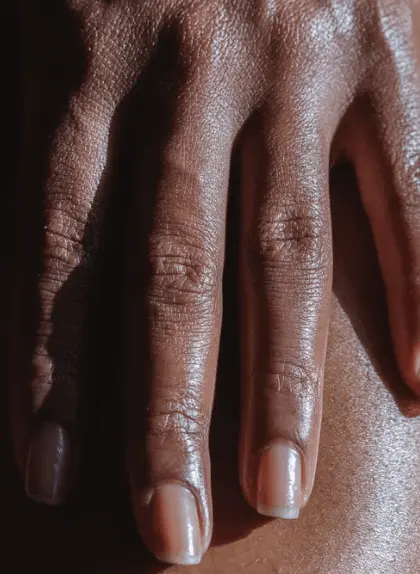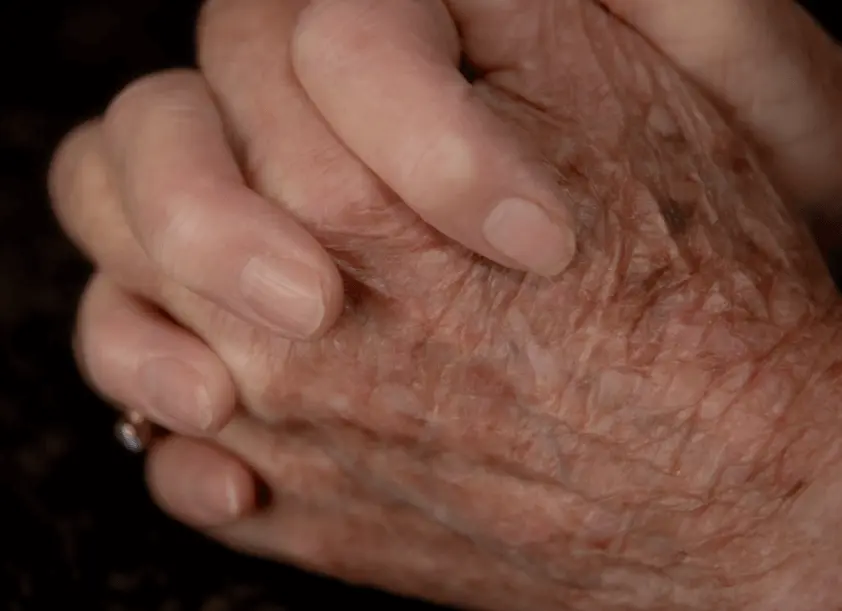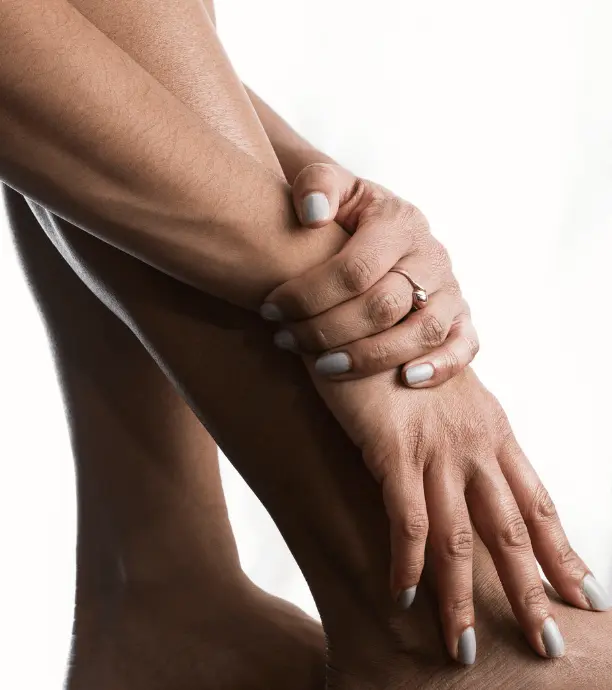It is essential to know that everyone has a different body shape and size. When it comes to weight loss it also differs from one other. So, it is very important to know each one’s body type for that they should know the total calorie and also medical conditions which helps in weight loss.
After losing weight many would have the problem of loose skin. It is because when a person workouts, the skin starts losing its elasticity on the other hand some people, get stretch marks on their body. You can’t completely prevent skin loosening when you lose a large amount of weight.
But there are a few steps you can take to firm up your dermis so that you get the proper weight loss without skin loss.
How to Tighten Skin After Weight Loss
12 Moves to Help Tighten Sagging Skin After Weight Loss (By Building Muscle)
- Bicep Curl to Overhead Press. Stand with feet hip-width apart, holding a dumbbell in each hand.
- Reverse Lunges.
- Push-Ups.
- Alternating-Arm Bent-Over Row.
- Sumo Squat.
- Farmer’s Walk.
- Deadlift.
- Chest Press.
Do Exercise
Losing a significant amount of weight can have a myriad of health benefits for your heart, hormones, and body in general. However, it has one side effect: loose skin. Many individuals have successfully lost a large amount of weight, usually 100 pounds or more.
May find themselves with loose skin that is uncomfortable and frustrating. Fortunately, there are ways to manage and treat loose skin with lifestyle changes, noninvasive treatments, and surgery. Exercise can help a lot.
What Causes Loose Skin?
Loose skin after weight loss is a result of several contributing factors. Our skin is partially made up of proteins called collagen and elastin fibers. These proteins give skin its firmness and allow it to snap back in place after being stretched.

When the skin is stretched for an extended period of time, the collagen and elastin fibers become damaged. After weight loss, your skin may lack the necessary proteins to return to its original shape. The skin loses its firmness and tends to just hang on the body.
In addition to losing elastin and collagen, the makeup of the collagen left in the skin changes as well. After losing weight, our skin contains less collagen and its composition is different than the collagen in young, healthy skin.
The makeup of your skin is also determined by other factors like age, history of smoking, general health, and family history.
Side Effects From Loose Skin
Many people who have achieved massive weight loss are not bothered by their excess skin and never require treatment. However, it is also possible for this extra skin to become irritated and even infected. When excess skin folds over onto itself, it rubs together and chafing can occur.
This can lead to a painful, itchy rash. Loose skin can also lead to infections. When loose skin folds over itself, it can be difficult to thoroughly clean each fold. Bacteria can accumulate and overgrow, causing an infection. If your skin chafes and tears slightly, the infection can enter the body.
Having excess loose skin on your body can cause pain and discomfort, especially when you try to exercise his was due to the fact that the excess skin made exercise uncomfortable, on top of the emotional discomfort of unwelcome stares and attention during activity.
The embarrassment of going for a run or to the gym because of their loose skin prevented many from working out. Even if your loose skin has not caused any health problems, you may be bothered by the way it looks. Studies have found that having excess skin can negatively impact your quality of life, self-esteem, and body image.
What causes loose skin after weight loss
Several factors contribute to loose skin following weight loss: Length of time. In general, the longer someone has had overweight or obese, the looser their skin will be after weight loss due to elastin and collagen loss. Amount of weight lost.
- Age
As you age, your skin becomes less elastic and more likely to sag. Over time, the skin starts losing collagen, which is the protein that makes it firm and elastic. In addition, the fatty tissues below the skin decrease and flatten out. All of these changes can lead to loose, saggy skin.

- Pregnancy
During pregnancy, your skin stretches to accommodate your growing belly. After you give birth, your skin may not snap back as quickly as it did before, leaving you with flabby skin after weight loss. This happens because, during pregnancy, your skin’s collagen and elastin fibers stretch and break.
- Genetics
Some people are simply more prone to loose skin than others. In fact, there are two types of skin: elastin-rich skin, which is more elastic and less likely to sag, and collagen-rich skin, which is more likely to sag. So, if you have collagen-rich skin, you may be more likely to have loose skin after weight loss.
- Medical Conditions
Certain medical conditions such as Cushing’s syndrome and hypothyroidism can cause your skin to become less elastic and more prone to sagging. This is because they cause your body to produce too much of the cortisol hormone, which breaks down collagen, and we know collagen is important for skin firmness.
Is it possible to get rid of saggy skin after weight loss?
You are not alone as loose or saggy skin is a common problem after losing a large amount of weight (more than about 50 to 100 pounds) in a short period of time. In time, you may see improvements in your skin’s elasticity, but some people may require surgery to remove excess skin.
How do you tighten loose skin after weight loss?
Medical or surgical treatments are more invasive options to tighten loose skin after major weight loss. People who have lost a significant amount of weight via bariatric surgery or other weight loss methods often request surgery to remove excess skin.
Factors that influence skin loosening during weight loss include the following:
- Age: As you get older, your skin becomes less elastic.
- Amount of weight you lost: Weight loss of 100 pounds or more typically results in a greater amount of hanging skin.
- Genetics: Genes influence how much firmness your skin retains as you get older. Some people are just more susceptible to sagging skin than others.
- How long you’ve been overweight: If you’re overweight for a long period of time you’re skin may not be able to fully contract back into its smaller shape when you lose weight.
- How quickly you lose weight: When you lose too much weight too fast, such as your skin’s elasticity doesn’t have time to catch up. The result is loose skin.
- Nutrition and water intake: Your skin may not be as healthy or firm if you aren’t getting balanced nutrition, vitamins, and minerals especially vitamins C and E.
- Smoking: This can speed up the normal aging process of your skin.
- Sun exposure: Your past, present, and future exposure to the sun can damage your skin.
How can I tighten loose belly skin?
- Add Exercise to Your Routine. At-home treatment options are ideal for minor sagging.
- Try Topical Creams & Lotions.
- Make Lifestyle Changes.
- Ask About Laser Therapy.
- Learn About Radiofrequency Treatments.
- Request Laser Resurfacing.
- Consider Tummy Tucks.
Some other tips that you can follow to tighten the loose skin after weight loss
Building muscle
The first step is to build muscle to target excess skin. In most cases, rapid weight loss is caused by high levels of cardio and a calorie-deficient diet. What happens here is that muscle is lost with the fat, and that can cause the skin to look saggy.
Exfoliate
If saggy skin after weight loss is troubling you, then you must try exfoliating your body. That’s because it will help promote blood circulation and remove dead skin cells from the surface. You could use a dry skin brush before you shower, just work it in circular motions starting from your feet and up to your heart.
Moisturise
Hydration is important on the inside, but also outside. So, while drinking plenty of water is a must, you also have to moisturize your skin well to keep it healthy. Use a good moisturizer that has collagen or natural oils such as coconut, almond, or olive oil to lock in moisture. Moisturising will also help to reduce stretch marks.

Massage well
Just the way exfoliation does wonders for your skin, so does massage. That’s because it increases the circulation of blood to the skin’s surface, thereby promoting the growth of new skin cells. It also helps to reduce muscle tension.
Do stretch marks appear when gaining weight?
Stretch marks appear while gaining weight by stretching your skin. If you stop stretching your skin and do the necessary steps to get rid of the stretch marks you will likely avoid having them. Loose skin is the product of extreme weight loss.
Apply shea butter. One option that some people have luck with is shea butter. It may reduce inflammation and it provides lots of hydration for your skin. Try pure shea butter, or pick a lotion with shea butter in it that you can apply every day.
Use coconut oil. Moisturizers or lotions with a coconut oil base are excellent for hydrating skin and reducing stretch marks. Pure coconut oil can be purchased in the cooking oil section of any grocery store. Massage your skin with solid coconut oil or a coconut oil-based lotion bar.
Try retinoic acid cream. Retinoic cream has been shown to help with stretch marks. However, it works best on ones that have just appeared. It likely helps by increasing collagen production, which in turn helps with the appearance of your skin.
